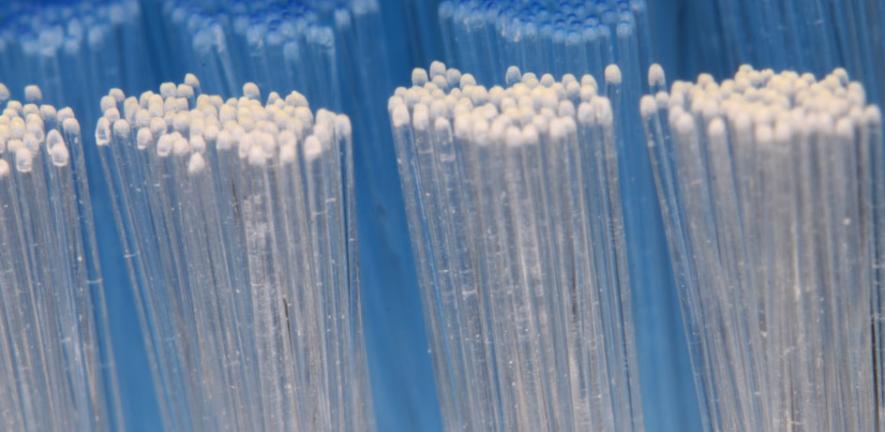
Pioneering research shines new light on our understanding of the way we see the world. Optical fibres have now been found to exist in vertebrate eyes, channelling light down their length and delivering it without distortion straight to the cells that ‘see’.
Pioneering research shines new light on our understanding of the way we see the world. Optical fibres have now been found to exist in vertebrate eyes, channelling light down their length and delivering it without distortion straight to the cells that ‘see’.
Nobody would put sandwich paper in their camera in front of the film and expect a crisp image – like the one we’re used to seeing. And yet, this is how the retina is constructed.
Dr Guck
Incredibly sophisticated in structure and function, the retina's construction has puzzled researchers ever since the finer structures of the eye were first resolved over 150 years ago: the retina is built the ‘wrong’ way around. The cells responsible for light sensing are sited at the back of the eye, furthest from the incoming light. An explanation for the ‘inverted retina’ has now been revealed by Dr Jochen Guck, newly arrived at the Cavendish Laboratory, while working with a team of scientists at the University of Leipzig, Germany.
Because of its inverted structure, light has to pass through several cells in the retina before it reaches the photoreceptor cells that capture the image and transmit it to the brain. How does this happen without the light being scattered and distorted? Dr Guck describes the problem: ‘Nobody would put sandwich paper in their camera in front of the film and expect a crisp image – like the one we’re used to seeing. And yet, this is how the retina is constructed.’
An understanding of this enigma has become possible with the invention of a special dual-beam laser trap or ‘Optical Stretcher’ by Dr Guck and colleagues, in which physical, light-transmitting properties can be visualised and measured at the level of a single cell. Using this tool, the researchers discovered that the answer to the mystery lies with specialised, elongated cells known as Müller cells, which span the retina and have an amazingly high refractive index compared with their surroundings. This difference in refractive index effectively means the light ‘bounces’ along the cell and barely leaks.
The ground-breaking studies, highlighted on the front cover of the Proceedings of the National Academy of Sciences USA, showed that the Müller cells essentially act as a field of miniature optic fibres – lined up in parallel in the direction of the light and traversing the whole retina. They trap the light, guide it down their length, and deliver it to the photoreceptors waiting to receive the stimulus. ‘All these living optical fibres together work like a fibreoptic plate,’ says Dr Guck.
With his move to the Cavendish Laboratory, Dr Guck has brought with him the new expertise of using light to investigate the mechanical and optical properties of living cells and tissues. His research adds to an ongoing initiative within the University to draw physics more deeply into the life sciences.
For more information, please contact Dr Jochen Guck (jg473@cam.ac.uk). This research was published in PNAS (2007) 104, 8287–8292.
This work is licensed under a Creative Commons Licence. If you use this content on your site please link back to this page.



